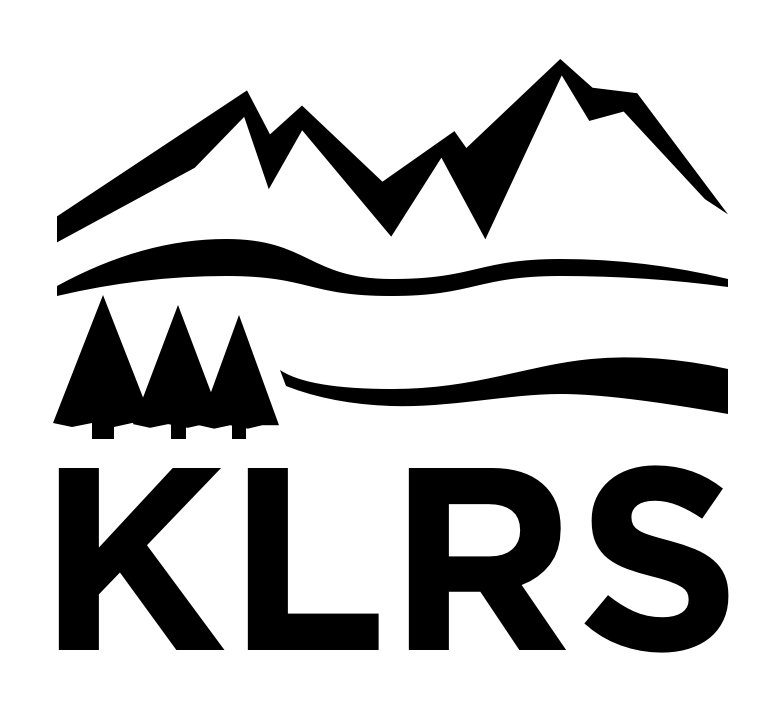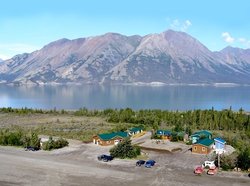
Kluane Lake Research Station

Address
Kluane Lake Research StationMile 1054 Alaska Highway
Yukon Y0B 1H0
Canada
Station manager
Kim HatcherContact Station
https://arctic.ucalgary.ca/kluane-lake-research-stationStation name and owner
The Kluane Lake Research Station (KLRS) is owned and managed by the Arctic Institute of North America (AINA), which is a non-profit research and education institute housed at the University of Calgary.
Location
In the southwest corner of Canada's Yukon Territory, KLRS is located on the south shore of Lhù’ààn Mân (Kluane Lake), within the Traditional Territory of the Kluane First Nation (KFN) and the Champagne and Aishihik First Nations (CAFN). KLRS is in close proximity to Kluane National Park and Reserve, which is a UNESCO World Heritage Site.
Climate data
Grey colours are WMO Climate Normals including maximum and minimum values. Blue colours are individual years.
Climate data for the stations where extracted via Copernicus Climate Data Store, from the global gridded reanalysis product:
ERA5 monthly averaged data on single levels from 1940 to present.
Description and source code: Roemer J.K. 2023. https://doi.org/10.5281/zenodo.10214922
Data Source: Hersbach et al. 2023. Copernicus Climate Change Service (C3S) Climate Data Store (CDS), https://doi.org/10.24381/cds.f17050d7
Biodiversity and natural environment
The location for KLRS was chosen for its access to a variety of ecosystems. Within a 30 km radius of the station there are boreal forest, alpine, and ice-cap eco-regions. The extreme elevation difference between Lhù’ààn Mân and the crest of the St. Elias Mountains establishes a strong gradient in environmental attributes, providing a remarkable diversity of research opportunities within a small geographical area.
History and facilities
KLRS was established in 1961 by Walter Wood and the Arctic Institute of North America. Wood had been mapping, photographing, and collecting climate data in the area since 1935. The station has evolved from a few tents beside a military airstrip to a comfortable base camp providing support for a variety of field research. Facilities include a mess hall with kitchen staff, washhouse, laboratories, storage space, and cabin accommodations. During full operations (April to September), up to 40 guests can be hosted at a time.
General research and databases
Researchers staying at KLRS study a variety of disciplines, including but not limited to glaciology, geomorphology, geology, geophysics, biology, botany, zoology, ecology, hydrology, and climatology. For over 35 years AINA has maintained a publicly accessible bibliography of all publications produced as a result of our research support. The KLRS bibliography forms part of the ADA: Arctic Discovery & Access educational service (https://ada.ucalgary.ca/). AINA also publishes the quarterly journal “Arctic”. KLRS has a weather station that meets World Meteorological Organization (WMO) specifications, and is an official WMO Global Cryosphere Watch CryoNet Station. The data is publicly available at https://webapp.ccadi.ca/kluane.
Link to data: https://dataportal.eu-interact.org/stations
Station Monitoring
Human dimension
KLRS is privileged to be situated within the Traditional Territory of the Kluane First Nation (KFN) and the Champagne and Aishihik First Nations (CAFN). Research in the region often occurs within the Traditional Territories of KFN, CAFN, and the White River First Nation (WRFN). The communities of Burwash Landing, Destruction Bay, and Haines Junction are within approximately 60 km from the station. KLRS is committed to prioritizing local communities through consultation, engagement and outreach.
Access
KLRS is road accessible via the Alaska Highway. The closest international airport is in the city of Whitehorse, approximately 220 km from the station. Vehicle rentals and shuttle companies are available for hire in Whitehorse for transportation to KLRS.

